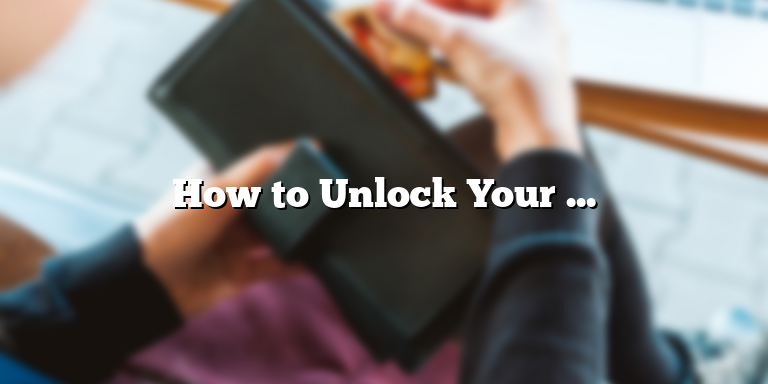
Tools and Materials
Before beginning to wire multiple outlets, it’s important to gather all necessary tools and materials for the project. This includes:
- Wire strippers
- Needle-nose pliers
- Screwdrivers (flathead and Phillips)
- Voltage tester
- Cable clamps
- Electrical tape
- Wire nuts
- Wire (depending on the number of outlets and distance to power source)
- Circuits breakers
- Outlet boxes
It’s also important to make sure you have the proper permits and understand any local electrical codes before beginning any electrical work. Safety should always be a top priority when working with electricity.
Determine the Circuit Layout
Before you start wiring multiple outlets, you need to first determine the circuit layout. Knowing the circuit layout can help you determine the appropriate placement for your outlets and prevent overloading, which can result in electrical hazards.
To determine the circuit layout, you need to take note of your electrical panel’s circuit breakers and the areas in your house that they correspond to. You can do this by identifying which switches control which section(s) of your home or by tracing the wiring behind your outlet to the electrical panel.
Once you have identified the corresponding circuit and its capacity, you can then determine the number of outlets that can safely be wired to that circuit. As a general rule, each circuit should support no more than 80% of its maximum load capacity to prevent overloading.
Additionally, you should also consider the types of devices that will be connected to each outlet. High-powered appliances like refrigerators, microwaves, and air conditioners consume more energy and should be connected to dedicated circuits.
Having a clear understanding of your circuit layout can help ensure proper outlet placement and prevent any potential electrical hazards.
Electrical Safety Precautions
Wiring outlets may seem like a simple task, but it can be quite hazardous if not done properly. Before starting any work, it is essential to take the necessary safety precautions to avoid any accidents. Here are some electrical safety precautions you need to take before wiring multiple outlets.
First, always turn off the power supply to the area where you will be working. Doing this will prevent any electrical shocks. You can do this by shutting off the circuit breaker connected to the section where you will be wiring the outlets. Make sure to lock the breaker in the off position using a circuit breaker lockout to ensure that no one will inadvertently turn the power back on while you are working.
Secondly, wear rubber-soled shoes and gloves when handling any electrical components. Rubber is a poor conductor of electricity and can prevent electric shock. Plus, wearing gloves will prevent any burns from hot wires or electrical components you might encounter while working on the wiring.
Lastly, use a circuit tester to make sure that the power is off before starting any work on the wiring. A circuit tester is a device that can determine if an electrical circuit is in a live or neutral position. It can prevent accidents by alerting you in case the circuit is still active even if you have turned off the circuit breaker.
By taking these necessary precautions, you can ensure that your wiring project will be a success without any accidents. Always prioritize safety when working on electrical components or wiring as a small mistake can lead to severe consequences.
Wiring the Outlets
Wiring multiple outlets can seem daunting, but it is actually a simple and straightforward process. The first thing you need to do is turn off the power to the circuit you will be working on. You can do this by turning off the corresponding circuit breaker in your electrical panel.
Once you have turned off the power, you can begin wiring the outlets. Start with the first outlet in the chain, which is usually located closest to the electrical panel. Take the black wire and connect it to the brass-colored screw on the outlet. The black wire is the hot wire, which carries the electrical current from the circuit breaker to the outlet.
Next, take the white wire and connect it to the silver-colored screw on the outlet. The white wire is the neutral wire, which carries the current back to the electrical panel. Finally, connect the bare or green wire to the green screw on the outlet. This wire is the ground wire, which is used to protect against electrical shock.
Once you have wired the first outlet, you can move on to the next one in the chain. Take a piece of cable and connect it to the first outlet by twisting the exposed wire ends together and securing them with a wire nut. Then, connect the other end of the cable to the second outlet in the same way as you did with the first outlet.
Repeat this process for each outlet in the chain until you have connected them all together. If you need to install a new outlet box, you can do so by cutting a hole in the wall and attaching the box to the framing behind the drywall.
It is important to remember that you should never wire outlets in series, as this can create a fire hazard. Instead, always wire them in parallel, which means that each outlet is connected directly to the main circuit.
If you are unsure about any aspect of wiring multiple outlets, it is always best to consult a licensed electrician. They can ensure that your wiring is up to code and help you avoid any potential electrical hazards.
Testing and Final Inspection
When it comes to electrical wiring, safety should be your top priority. Thus, it’s essential to double-check your work before you turn the power back on. Here are some tips for testing and final inspection after wiring multiple outlets:
Use a Circuit Tester
A circuit tester is a handy tool that can help you determine if your outlets are wired correctly. It checks for an open ground, an open hot, and a reverse polarity. To use it, simply plug it into each outlet and follow the instructions on the tester’s manual. If your outlets pass the test, you can proceed to the final inspection; otherwise, you need to troubleshoot the problem until you resolve it.
Inspect the Wiring
Before closing the outlets’ junction boxes, inspect the wiring to ensure that there are no loose connections or exposed wires that could cause a short circuit or electrical shock. Keep in mind that even a small mistake can lead to serious consequences, so take the time to do it right. Use a wire stripper to remove the insulation from the wires, twist the wires together tightly, and secure them with wire connectors.
Test with a Load
Another way to test your outlets is to connect a load, such as a lamp or an appliance, and see if it works correctly. Plug it into each outlet one at a time and turn it on, making sure that it doesn’t flicker or dim. If everything looks good, you’re ready to move to the final inspection. If not, you may need to troubleshoot the problem further or ask for help from a professional electrician.
Final Inspection
After testing your outlets, it’s time to call a certified electrician for a final inspection. They will check your work for safety and compliance with local codes. If they find any issues, they will advise you on how to fix them before turning the power back on. Don’t skip this step even if you think you’ve done everything right. A second opinion can save you from costly mistakes and ensure that your electrical system operates safely and reliably.
In conclusion, wiring multiple outlets may seem like a challenging task, but it’s doable if you follow the right steps and safety guidelines. Be patient, take your time, and don’t cut corners. Remember, electricity is not something to play around with; it’s a serious matter that requires caution and attention to detail. By following these tips, you can wire multiple outlets like a pro and enjoy the benefits of a well-wired home or office.






